Could allotment gardening in Europe provide a model to end Homelessness in America?
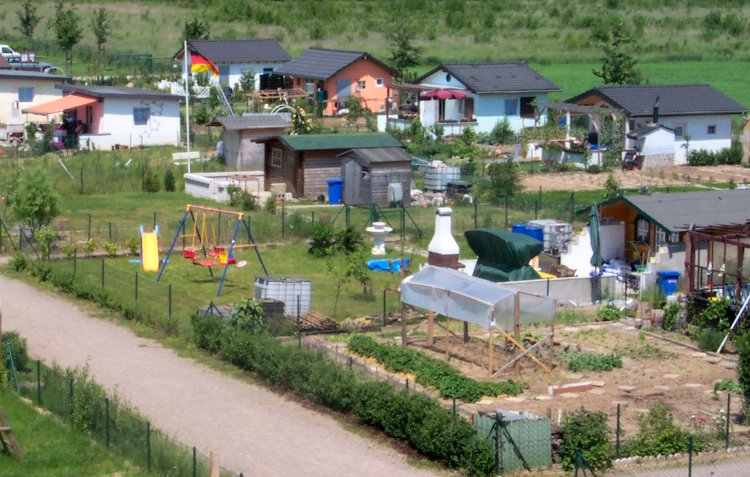
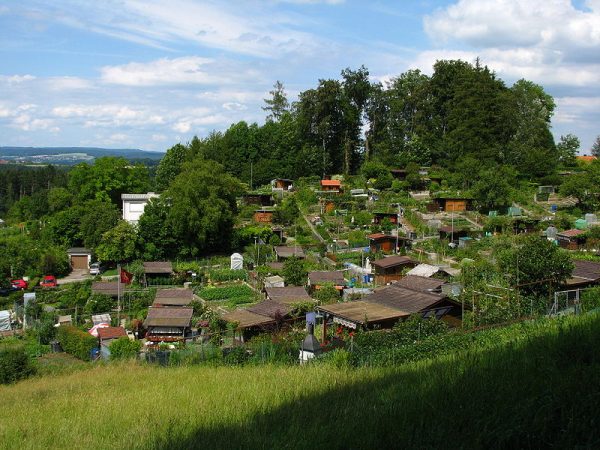
One of my Tiny House Living readers, Wayne, passed this onto me. A Kleingarten, or allotment gardening is similar to the community gardens you might find across America but have some significant differences.
The parcels typically range in size from 200 and 400 square meters each (2,100 to 4,300 square feet) and often include a structure (tiny house) for tool storage and shelter during visits. To provide governance, member associations are formed to manage plot assignment and the collection of fees for leasing the land and common maintenance.
The land can be owned by a public, private or church entity and there can be several hundred gardens in one community. These were originally setup to help provide communities with a variety of benefits including providing those in need a place to grow food inexpensively.
It’s estimated that there are about three million individual allotment gardens across Europe today. The earliest allotment gardens mentioned in the Wikipedia article date back to the 1700’s and 1,800’s. You can read all about this on Wikipedia.org in English and in German.
We really should do something like this in America for people that need a little space to get back on their feet. I’ve written about this kind of idea before and small communities like this do exist in America, like Dignity Village, but they are often blocked by local governments and communities. I just can’t see how this kind of solution could be worse than the current situation.
Imagine self-governed groups setting up small sustainable villages like this on leased or donated land, growing their own food, taking pride in their life and work, and having a safe place to get back on their feet. The only real difference I’m suggesting is that the tiny homes in American allotment gardens should be habitable.
I would also go as far as to say they these should not be limited to those in severe need of housing but be made available for folks looking for a simpler lower cost life. In fact that would probably make the whole community function better by increasing the diversity of people living and gardening there. In fact not all the allotment gardeners would need to be residents but could still participate in the community.
I could continue to ramble on but I think you can now see that the sky is really the limit on positive benefits to our communities something like this could bring. I can hear the critics already arguing that low-cost communities like this could bring property values down farther and increase crime. I’d argue that our economy would recharge more quickly as more Americans became more productive, more self-reliant, and felt better about their life and future.
Wayne… thanks again for tipping me off to the Kleingarten. Photo credit Wikipedia.
Update: Wayne just passed on this great website resource to me called Kleingartenverein Liebhartstal. (Also see the English translation.) It’s an example of one very successful allotment gardening association in Vienna, Austria.

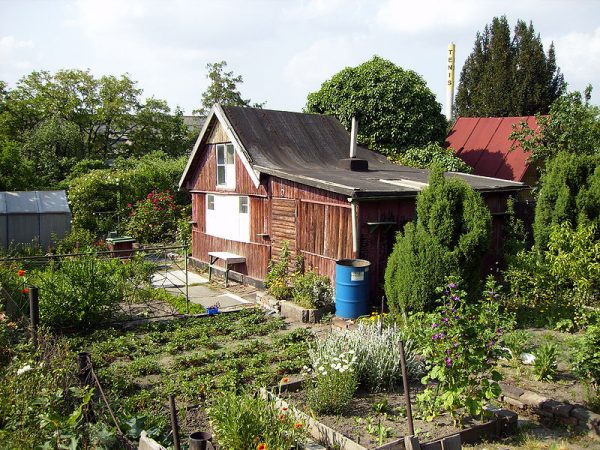
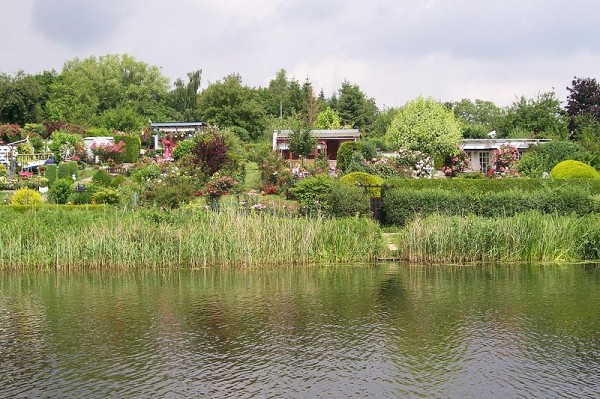
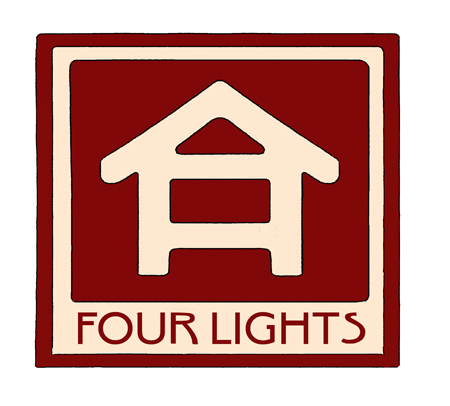

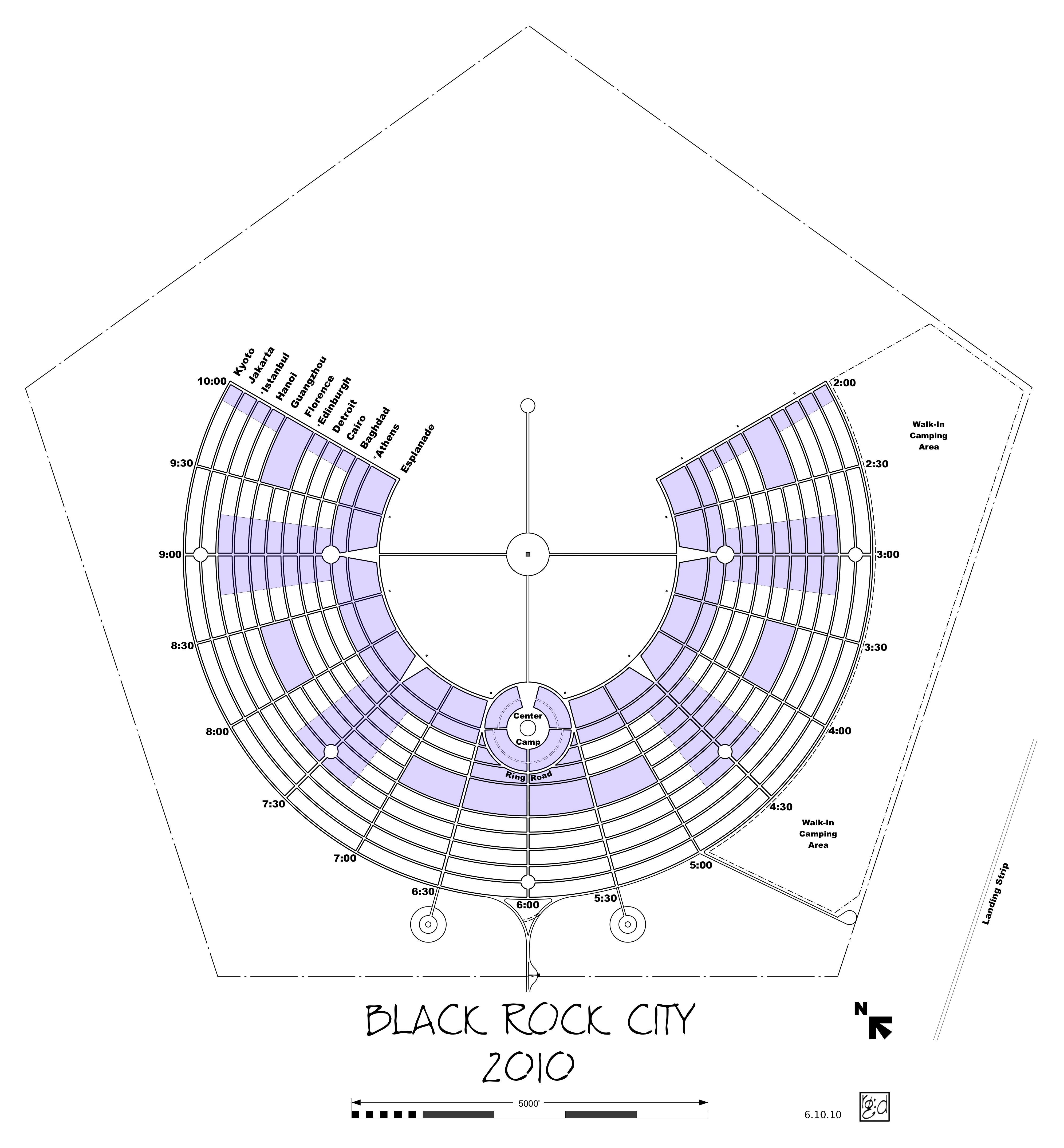
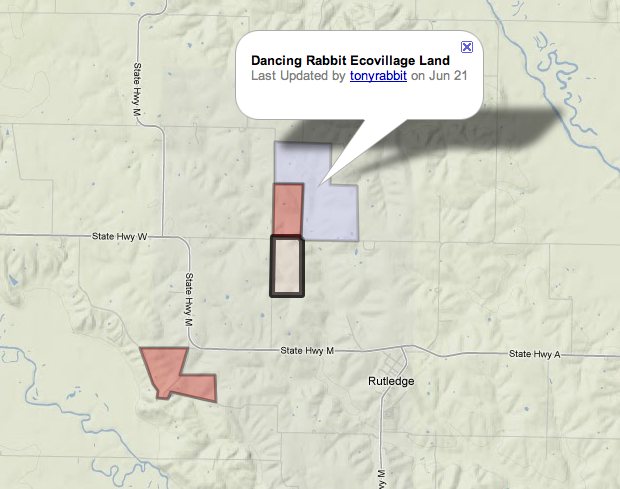
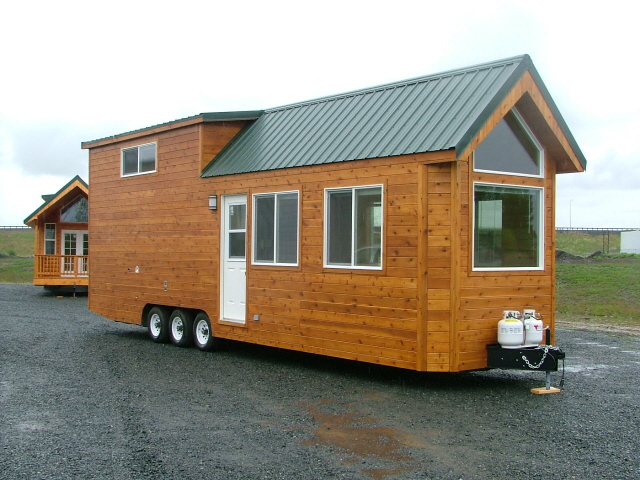
I live very near one of these in France and I never thought of them from this perspective of fighting poverty and working as a long term residential space.
Very interesting idea!
Some of these allotments have some interesting rules:
may not be sold, but revert back to organization when left
or they may be bought and sold but with a maximum cost
This ‘Kleingarten’ is known as a Schraebergarten in most parts of Germany. They are quite popular and are often passed down in families. They were created out of neccessity (lots of small spaces in Europe) but are actually a remnant of castle life. Early-on in Medieval Europe, peasants would sleep in the security of the castle/fortress walls and would work, by day, in the fields which surrounded. Fast forward 1000-1500 years and the castles are replaced by urban sprawl (with suburbs nearly non-existant) which is separated by vast tracts of open space. Enter the Schraebergarten or Kleingarten – the bridge between urban efficiency and rural wilderness. I would love to see the concept come to America – each house would not then need to be as separated from others as is the current state in modern suburbia but Americans would still be able to enjoy yards. Also, as is done in Europe, the concept lends itself well to the ever-increasing ‘staycation.’
i have been reading all the articles on your blog over the past few months. i have read maybe 100 of them or more. i figured it was time for me to post something.
im 23 and im from louisville ky. im fresh out of the navy and have a new outlook on the way american live after being to over 15 countries all over south east asia, and im looking to make a change for sustainability and less waste.
ok, for the opinion…..
i think this is a great idea and i could see how it could work. the problems with alot of americans is a feeling of helplesness. they have grown complacent off welfare and other social programs. empowering them would be the hardest thing. once they where shown the skills (taking a year or more) it would work. but to just put it in somones hands and say “here ya go” would not work. americans are some of the most hard working people in the world. and im proud to say that! but we still must be shown the way, and then even have our hands held in some cases.
good article, thank you for your contribution.
In Denmark these also serve as vacation homes or summer residences … particularly those near the seaside.
I live in Hungary where almost every town and city have garden areas such as these around them. Very popular, and even more so with the current economic environment. Rules vary from city/municipality/regulatory authority throughout the country, however many of them have exactly the community you refer to, a mixture of permanent, day and occasional residents in tiny houses. My garden has my tiny house which I use on a day basis as my office studio. Two gardens down the owners live there all year round and the other gardens around have a mixture of year round, summer and day dwellers. Great area. Most gardens in the area are 600 sqm and the building rules allow you to build on 5% (I think it is, might be more) of the land area. In our specific area the land is bought and owned by each garden owner (, but we pay a small fee to the garden association who do the general upkeep. Mains electric run through the area and so each garden can have an electric meter installed on their property, same is so for mains water supply (this being even though we are 4km from town). You can also have a well in the garden and use ground water. Very well organised with a little Buffet/pub with public childrens playground at the centre of the community.
Most all of the ancient and contemporary applications of the “garten plot” concept are correct. The concept, as applied to contemporary situations in Europe, are not primarily devoted to housing the homeless. Many Europeans live in rented or owned apartments located in dense urban centers. These old and new apartments typically have no personal exterior green space. But the apartment dwellers still have the need for a connection to the earth and the ability to grow / raise some of their own food. Especially in post WW2 recovery Europe, the garten plots served to solve multiple needs, i.e. food, housing, security, and social connection. Some of those basic emergency needs are still being met by the garten plot concept today. But the majority of the garten plot communities are now primarily used as a way to escape to the countryside and reside in a more relaxed surrounding.
While the physical garten plot concept might work to help solve housing needs for some members of the community, I seriously doubt that the concept will work to permanently solve the homeless problem.
Lets be honest and not star-blinded. There are multiple homeless and near-homeless profiles at play in society, such as; 1) working poor, 2) unemployed, 3) substance abusers, 4) released criminals, and 5) mentally ill folks. Some of the people who are homeless may never succeed in escaping their homeless condition nor be able to afford the cost of living an a garten plot community once they have risen above their former homeless circumstances.
Where the garten plot concept is most likely to succeed is where individuals want to either “down-size” or to totally avoid the high cost of entering the typical home-ownership model.
Garten plot “communities” can help to solve the housing and connection-to-the-earth needs for many individuals and small families. But my observations of the most successful garten plot developments in Europe suggest that they are not the solution for the chronically homeless segments of society.
Constructing garten plot “buildings” on-site for owners or selling garten plot kit-buildings to owner-builders is a fairly well developed sub-sector of the housing industry in many European countries.
Small-house, tiny-house, and alternative-community planning proponents can learn a lot from the garten plot concept.